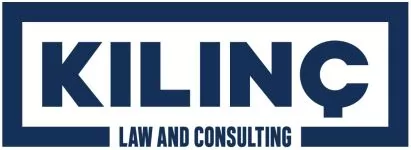INTRODUCTION
An accident is typically defined as the harm or damage caused to a person, object, or vehicle due to an involuntary or unforeseen event. Work accidents bring significant losses primarily to the employee, followed by the employer and society, and they often have enduring effects on the injured parties and their families. With the advancement of industrialization and technology, various work groups have emerged, leading to a diversity of work accidents. The International Labor Organization ("ILO") defines work accidents as unexpected and unplanned events resulting in specific damage or injury. Despite the existence of sufficient regulations on work health and safety in our legal framework, a considerable number of work accidents, past and present, stem from inadequate training and supervision.
A. DEFINITION OF THE WORK ACCIDENT
In Turkish legislation, work accident is defined in the relevant laws and doctrine as follows.
According to the subparagraph g of Article 3 of the Work Health and Safety Law No. 6331 ("WHSL"), a work accident is defined as: any occurrence taking place at the workplace or due to the performance of work which leads to death or physical or mental impairment to the physical integrity of the victim.
According to the Article 13, Paragraph 1 of the Social Insurance and General Health Insurance Law No. 5510 ("Law No.5510"), work accident is the incident which occurs:
"a) when the insurance holder is at the workplace,
b) due to the work carried out by the employer or by the insurance holder if he/she is working on behalf of own name and account,
c) for an insurance holder working under an employer, at times when he/she is not carrying out his/her main work due to the reason that he/she is sent on duty to another place out of the workplace,
d) for a nursing female insurance holder under item (a) of paragraph one of Article 4 of this Law, at times allocated for nursing her child as per labour legislation,
e) during insurance holder's going to or coming from the place, where the work is carried out, on a vehicle provided by the employer, and which causes, immediate or delayed, physical or mental handicap in the insurance holder."
The doctrine defines a work accident as an accident suffered by an employee as a result of an external event arising out of the work or work performed for the employer while the employee is under the control of the employer.
B. ELEMENTS OF THE WORK ACCIDENT
For an accident occurring in the regular course of life to be deemed a work accident, specific criteria must be met, as established by Supreme Court of Appeal case law and doctrine. Briefly, these criteria include; (i) the insured individual is the victim of the accident, (ii) the victim sustains immediate or subsequent physical or mental harm, (iii) the insured experiences the accident within the time and place parameters outlined in Article 13 of theLaw No.5510 and (iv) exists a causal link between the accident and the insured individual.
The causal link criterion requires detailed evaluation, particularly concerning the determination of liability for both the primary employer and the sub-employer. The presence of a suitable causal link in the accident holds significance in terms of liability law. Essentially, even if the incident is classified as a work accident under the purview of Article 13 of Law No. 5510, it is essential to ascertain whether the primary employer or sub-employer bears responsibility for the respective work accident. In instances where the appropriate causal link between the work accident and the employer cannot be established, meeting the material or moral compensation claims of the beneficiaries may not be feasible.
C. THE CIRCUMSTANCES CONSIDERED AS WORK ACCIDENTS
The employer is obligated to indemnify the employee in cases where a causal link between the accident, damage and the employer is established. In both the practice and the doctrine, in case four presumptions are established, it is considered that there is a proper causal link, unless proven otherwise. Those are;
- The accident occurred because of the execution of the work
- The incident occurred during working hours or in situations considered as working hours
- The workplace and the work carried out are dangerous
- Failure of the employer to take work health and safety measures
In cases where an accident arises due to the employer's failure to adhere to the mandated work health and safety measures as stipulated by law and other regulations, the presence of a suitable causal link will be highlighted. In practice, the employer or sub-employers are held responsible for the failure of the employer(s) to take the necessary work health and safety measures.
Even if the above presumptions are not established in a work accident, there is a risk that the employer may be held liable for the work accident if the appropriate causal link is established due to the circumstances of the concrete event.
At this point, it is worth noting that if the appropriate causal link is severed after the occurrence of the work accident, the employer will not bear liability because of the work accident. In cases where the appropriate causal link is severed or does not exist, the insured who has suffered a work accident will only benefit from insurance benefits. According to the established jurisprudence of the Supreme Court of Appeal and the doctrine, the three main reasons that cause the causal link to be severed are; (i) the existence of force majeure, (ii) the fault of the injured partyand (iii) the fault of the third party.
D. BENEFICIARY CLAIMS IN WORK ACCIDENT CASES
Compensatory entitlements arising from a work accident and the parties eligible to claim them necessitate analysis under distinct categories. In the unfortunate event of an employee's demise due to a work accident, financial compensation can be pursued by the deceased employee's heirs, relatives, dependents, and individuals financially supported by the employee, from the employer. Conversely, in cases where a worker sustains injuries from a work accident, the worker retains the right to seek material and moral compensation from the employer, grounded on the premise of enduring mental and physical trauma.
- In case of a fatal accident;
Pursuant to Article 53 of the Turkish Code of Obligations No. 6098 ("TCO"), the beneficiaries may claim funeral expenses, treatment expenses if the employee has undergone treatment due to the work accident before his/her death, and compensation for deprivation of support of the deceased. In addition to the material compensation items, it is common for the employee or the relatives of the employee to suffer moral damages because of the work accident, and the compensation of moral damages is not covered by the Social Security Institution. For this reason, the employee who has suffered a work accident and his/her relatives may claim non-pecuniary damages from the employer and this claim may be asserted against the employer together with the claim for pecuniary damages.
- In case of an injured accident;
Pursuant to Article 54 of the TCO, the employee is entitled to claim treatment expenses, loss of earnings during the period he/she is unable to work due to the work accident (temporary incapacity compensation) if the physical damage is not permanent, loss of earnings due to partial or total loss of working capacity (permanent incapacity compensation) if the physical damage caused by the work accident is permanent, and compensation for the losses arising from the shaking of the economic future. However, in order for the employee who has suffered an accident to be able to claim non-pecuniary damages, it is not required to be disabled due to the accident, and multiple factors such as the treatment process of the injured person, the severity and permanence of the damage incurred, the effects of the damage are taken into consideration in the appreciation of the non-pecuniary damages by the court, and non-pecuniary damages may be awarded in favour of the employee for the employee who is not disabled due to the accident.
The calculation of such compensation is based on the profit that the worker could not obtain due to the work accident within the period between the date of the work accident and the probable date of death. In addition, issues such as the net income of the employee, the period of workability (estimated duration of work), and the fault ratios of the employer and the employee are also taken into consideration.
E. CIVIL AND CRIMINAL LIABILITY ARISING FROM WORK ACCIDENTS IN THE CONTEXT OF THE PRİMARY EMPLOYER AND SUB-EMPLOYER RELATIONSHIP
The institution of sub-employer is addressed under Article 2 of the Labor Law and Article 3/a of the Regulation on Subcontracting ("Regulation"), while Article 4 of the Regulation lists the conditions that must exist for the establishment of subcontracting. Within the scope of the established jurisprudence of the Supreme Court of Appeal, while evaluating this issue, the issues to be considered within the scope of the law are discussed separately in terms of the concrete case.
In the Supreme Court of Appeal decision cited below, the responsibility of the sub-employer and the elements of this responsibility are explained in detail:
"The joint liability of the primary and sub-employer is "joint and several liability". Although there is no direct service contract, the primary employer is jointly and severally liable with the sub-employer for the material and moral damages that the sub-employer's employees will suffer due to work accidents or work diseases in accordance with paragraph 6 of Article 2 of the Labor Law. For this reason, the employee of the sub-employer who suffers from an occupational disease or work accident or his/her heirs in the event of his/her death may file a lawsuit for compensation against the primary employer and the sub-employer, who are jointly liable, or only against the primary employer or the sub-employer.
There are certain mandatory elements to refer to a sub-employer and to hold the primary employer liable for the debts of the intermediary.
a-) There must be a primary employer who employs workers at the workplace. Since those who do not employ insured workers will not qualify as "employer", those who receive work from such persons will not be considered as intermediaries and solidarity liability will not arise within the scope of the aforementioned article.
b-) Another employer must hire and employ an insured in a work related to the production of goods or services or in the parts or attachments of a work carried out in the workplace.
c-) The title of employer must have been acquired because of the employment of insured persons in the work received and due to that work. The title of employer gained by this person due to the insured persons employed in some other workplaces has no impact on the result.
d-) The work received from the employer should not be of a nature that can be considered as a separate and independent workplace according to the work in which the employer employs the insured, otherwise the person who receives work will be considered as an independent employer, not an intermediary.
e-) If the whole of the work is left to another employer, if the work is given on turnkey basis or if the employer divides the work and assigns it to different persons by tender without employing insured employees, there will not be sub-employment, since the owner of the work (the contracting authority) will not be the primary employer as defined by the Law.
f-) The work undertaken by the sub-employer must fall within the scope of a portion of the employer's main tasks or auxiliary functions. If the work assigned by the primary employer holds a separate and distinct nature from the tasks performed by its insured employees, the individual undertaking the work will be deemed an independent employer rather than a sub-employer.The pivotal consideration here is whether the assigned task serves as an integral or auxiliary component to the primary task. Should a task be assumed that does not pertain to workplace production and lacks complementarity to the primary task, the designation of a sub-employer becomes inapplicable, resulting in the existence of two independent employers. (The ruling of the General Assembly of the Civil Chambers of the Supreme Court of Appeal, dated May 24, 1995, and numbered 1995/9-273-548, aligns with this interpretation)."
As stated in the case law of the Supreme Court of Appeal, the legal criteria are met at the point that the work performed is complementary / auxiliary to the main work. It is stated that it is not possible to consider a business relationship that is not an auxiliary or complementary work of the main business as a sub-employment relationship, and in this context, there will be two separate employers. In the event that there are two separate employers, it should be noted that each employer must take work health and safety measures separately for the employees it employs.
In the event that a business relationship is evaluated within the scope of a sub-employment relationship and the criteria listed above are met; the principle of joint and several liability between the sub-employer and the primary employer is stipulated by the legislator. The main purpose of including joint and several liability within the scope of the law is to protect the employees of the sub-employer as much as the employees of the primary employer. Due to joint and several liability, the employee has the right to apply to both the primary employer and the sub-employer.
In the event that the employment relationship meets the conditions listed above, in other words, if a sub-employment relationship is established, the employer is responsible for taking work health and safety measures for the workers listed under Article 4 of the WHSL.
F. AGREEMENTS ON LIABILITY BETWEEN EMPLOYERS
In practice, it is frequently encountered in the service contracts concluded between the primary employer and the sub-employer that the relationship in question cannot be considered as a subcontracting relationship or that the sub-employer is the sole and responsible employer for its employees and that the primary employer cannot be held liable for the claims of the sub-employer's employees. Such provisions agreed between the primary employer and the sub-employer do not apply to the right holders or the employees. In other words, the resulting debt and receivable relationship concerns only the contracting parties.
"On the other hand, the agreement between the primary employer and the sub-employer stipulating that the responsibility for material and moral compensation due to work accident or work disease belongs to the sub-employer does not bind the employee or heirs who are not a party to this agreement."
As ruled by the established case law of the Supreme Court of Appeal, although the sub-employer and the primary employer may conclude a liability arrangement within the scope of the agreement concluded between them, it will not be applicable to the compensation claims of third parties, including the employee, who is not a party to this agreement.
The other issue to be addressed is the criminal liability within the scope of the sub-employment relationship. Pursuant to Article 20 of the Turkish Criminal Code No. 5237, criminal liability is personal and no one can be held responsible for the acts of another person. As a rule, whichever employer is responsible for the occurrence of a work accident, criminal liability should be directed to the said employer. Therefore, in the event of a fatal work accident, the criminal responsibility of the employee who is under the responsibility of the sub-employer cannot be directed to the primary employer.
G. CONCLUSION
For an accident that occurs in the ordinary course of life to be qualified as n work accident, the following conditions must coexist: the victim must be insured, the victim must have suffered immediate or subsequent physical or mental damage, the insured must have suffered an accident in accordance with one of the matters listed in Article 13 of the Law No.5510 in terms of time and place, and there must be a causal link in the accident. The causal link criterion is particularly significant in terms of the law of liability.
The institution of sub-employment is addressed within the scope of Article 2 of the Labor Law and Article 3 of the Regulation. The principle of joint and several liability is stipulated between the sub-employer and the primary employer, and the main purpose of including joint and several liability within the scope of the law is to protect the employees of the sub-employer as much as the employees of the primary employer.
In practice, although it is frequently encountered in the service contracts concluded between the primary employer and the sub-employer that the relationship in question cannot be considered as a sub-employer relationship or that the sub-employer is the sole and responsible employer for the employees of the sub-employer and that the primary employer cannot be held responsible for the claims of the employees of the sub-employer, it will not limit the right of application of the employee or right holders in accordance with the principle of proportionality of contracts. In terms of criminal liability, the situation is different from civil liability, and whichever employer is responsible for the occurrence of the work accident, as a rule, the criminal liability should be directed to the said employer.
The content of this article is intended to provide a general guide to the subject matter. Specialist advice should be sought about your specific circumstances.


